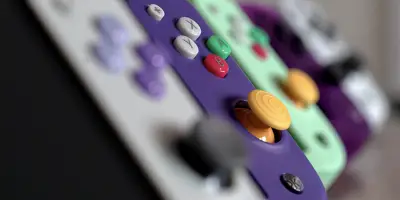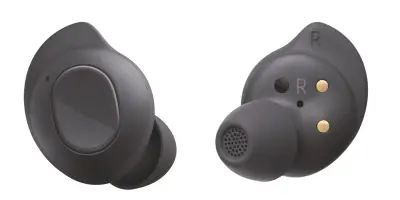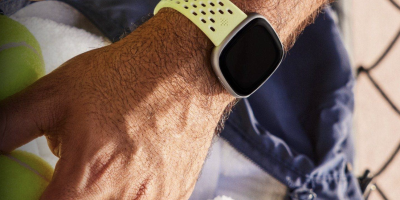While Google’s upcoming Pixel 8a is still a few weeks away from its official reveal, we’ve gotten a ton of leaks which give us a good idea of what to expect once it launches. Based on what we know so far, it’s shaping up to be an impressive handset with a 120hz display, Google’s impressive computational photography, and the same chipset found on the flagship Pixel 8 series.
With that being said, there are also rumors that the Pixel 8a might come with a considerable price increase, although it will still be a bit cheaper than the base Pixel 8, which has prompted some questions about the need for the latter’s existence. Nevertheless, the 8a will serve as the poster-child for Google’s midrange smartphone range, although it’s certainly a lot more different now compared to earlier A-series models, and what they represented for consumers.
So with that in mind, let’s take a quick look at what made past Pixel A-series phones so unique and well-loved.
Pixel 3a: Midrange Marvel
![]()
Perhaps it’s safe to say that the launch of the Pixel 3a served to expand Google’s reach as far as its smartphones were concerned. Sure, the Pixel flagships were in many ways better than the 3a with superior hardware specifications and exclusive features, but I’d like to think that the 3a’s affordable price, camera performance, and clean software experience were its biggest selling points.
…it seemed like Google had a winning formula in its hands – give people a competent Android experience with a really good camera, for not much cash.
With a price tag half of what the Pixel 3 cost ($400 vs $800), the 3a was an attractive choice for people unsure of what to expect from Pixel phone. It was actually my first Google smartphone, and I remember being blown away by how clean the software was, how terrific my photos looked, and how consistent Google was at providing software upgrades. At this point, it seemed like Google had a winning formula in its hands – give people a competent Android experience with a really good camera, for not much cash.
Pixel 4a and 5a: Evolution
![]()
Moving onto the Pixel 4a (and 4a 5G), Google gave its midrange smartphone line a design overhaul with a full-screen display, hole punch camera, and internal upgrades such as a slightly-faster Snapdragon chip, and two more gigabytes of RAM. It also kept the price relatively low at $349, even cheaper than the Pixel 3a. It was a much-welcome upgrade for most users, and while the 4a 5G model was a bit more expensive at $499, it did pack a larger display and battery, as well as an additional ultra-wide camera.
READ: How Long will your Pixel Phone Keep Getting Updates?
Meanwhile, the Pixel 5a was a very minor upgrade from its predecessors – it came with a lot of the same hardware on the Pixel 4a 5G, save for a slightly larger display. It even used the same Snapdragon 765 5G chipset, and the same resolution for its camera sensors. Strangely though, it was a bit more affordable, priced at $449 at launch. Compared to the Pixel 5 which launched at 700 bucks, the 4a 5G and 5a would signal the beginning of Google’s price hike for its A-series phones, a considerable change of pace from the 3a.
Pixel 6a: Almost Premium
![]()
Enter the Pixel 6 series – Google’s 2021 line of flagship smartphones once again served as a major hardware redesign for the Pixel line, featuring a new iconic camera bar on the rear panel, all-glass builds, a custom chipset, and much larger displays. Since the A-series phones were meant to be cheaper (albeit identical-looking) alternatives to the mainline Pixels, many were wondering what the 6a would be like.
For $250 less though, there were some key compromises with the Pixel 6a.
Unsurprisingly, the Pixel 6a looked rather identical to the Pixel 6, even with the camera bar design on the rear panel. For $250 less though, there were some key compromises with the Pixel 6a – it had less RAM, a slower 60Hz display, it also used an older 12MP sensor, had slower charging speeds, and was made out of plastic, despite mimicking the appearance of its flagship sibling. For some, the downgrade in specs and performance weren’t enough to warrant the lower price, making the Pixel 6 the more ideal choice. Most of these compromises would disappear with the launch of the Pixel 7a however, as we would eventually see.
Pixel 7a: Déjà vu
![]()
The Pixel 7a is a peculiar case – for a 100-dollar difference in price with the flagship Pixel 7, you got a significant upgrade over the Pixel 6a, such as the metal camera bar design (albeit with a plastic back), a 90Hz display, 8GB of RAM, wireless charging, higher-resolution camera sensors, and improved camera performance. Since the 7a was priced so close to the 7 though, some argued that its entire existence was moot, as a bit more coin could get you a full-flagship experience without the compromises.
READ: Google Brings “Circle to Search” for More Pixel Models
It was at this point that Google’s A-series line felt more like a placeholder at times, rather than a true-blue budget alternative to the Pixel flagships. To be fair however, I greatly enjoy using my Pixel 7a as it does provide me with essentially the same user experience on its more expensive siblings, and it’s nice to see the phone get a price cut – most retailers will have it on stock for less than $400, a price which would have been more ideal when it launched.
Final Thoughts
Should the recent rumors prove to be true, the Pixel 8a will symbolize a drastic change of strategy from Google, if it does indeed launch with a higher price tag. Of course, you might get an overall better user experience thanks to the newer hardware features, but it should also be noted that by the time the 8a launches, the Pixel 8 will be considerably cheaper than it was at launch, again blurring the line between upper midrange and flagship segmentation.
On one hand, it might be too soon to tell how things go, as Google’s 2024 I/O conference is still a few weeks away, at which point we might finally get some news on the 8a. But one thing’s for sure though – a return to form will be most welcome indeed.










Comments